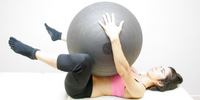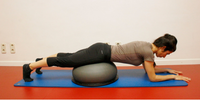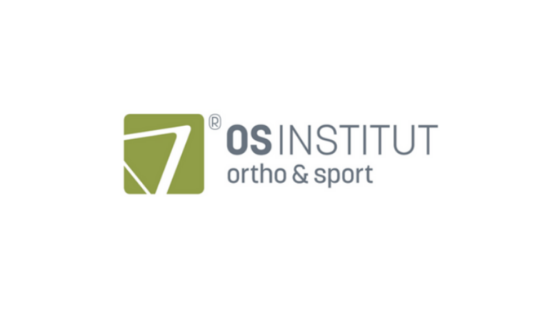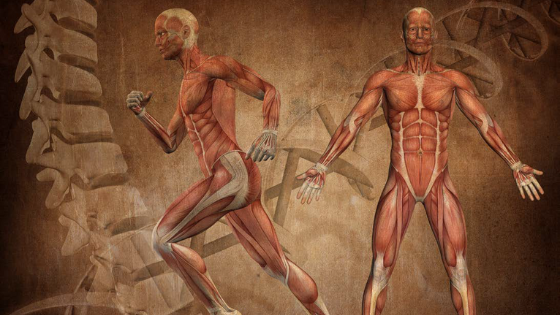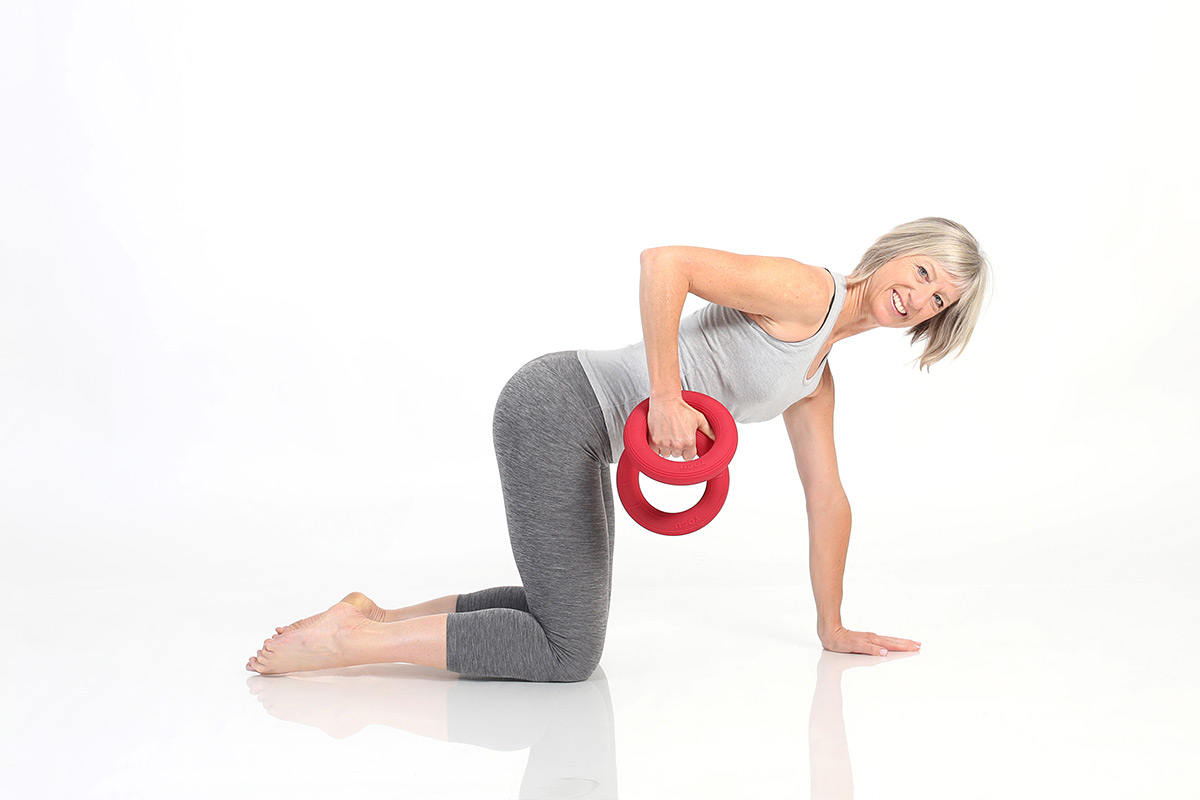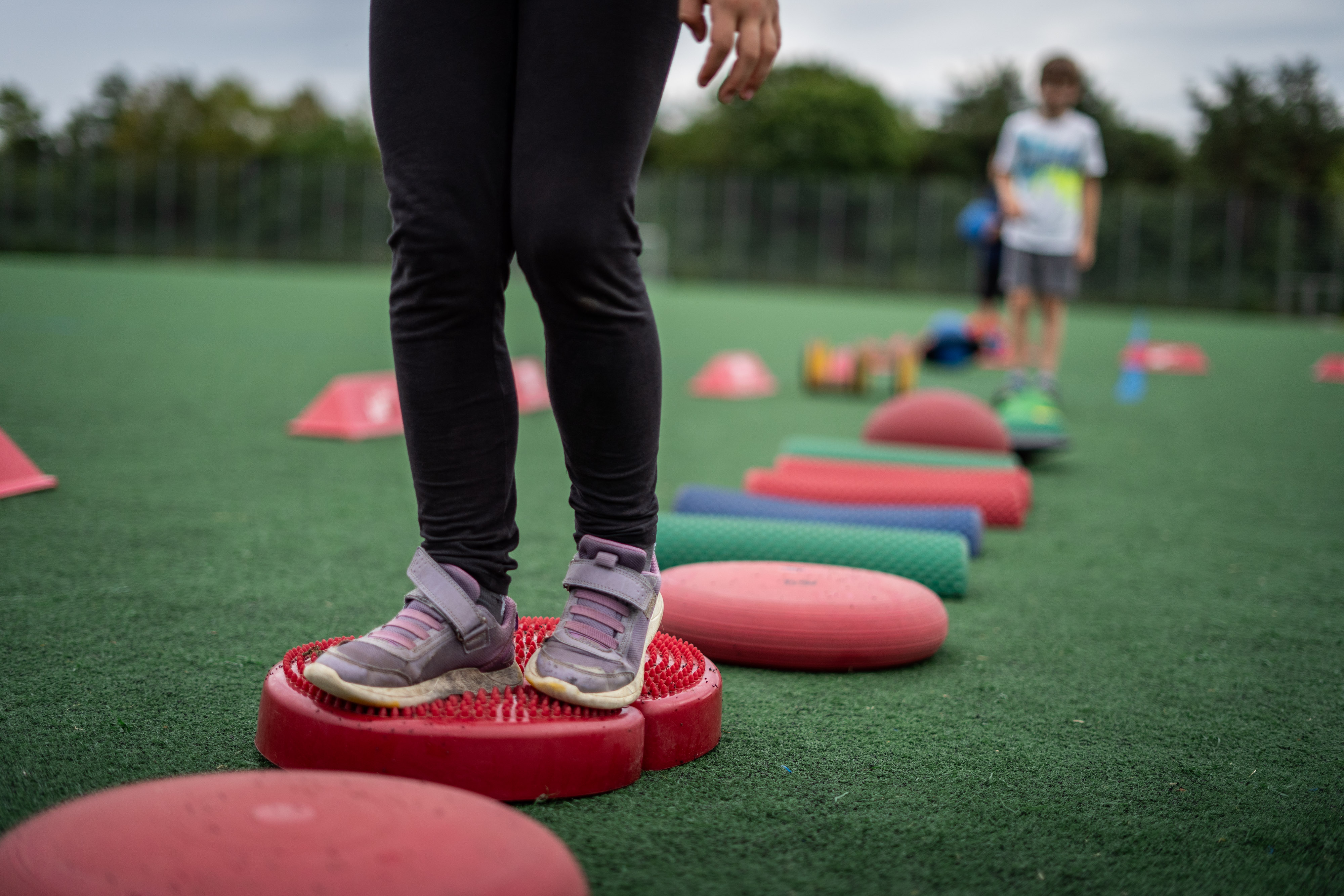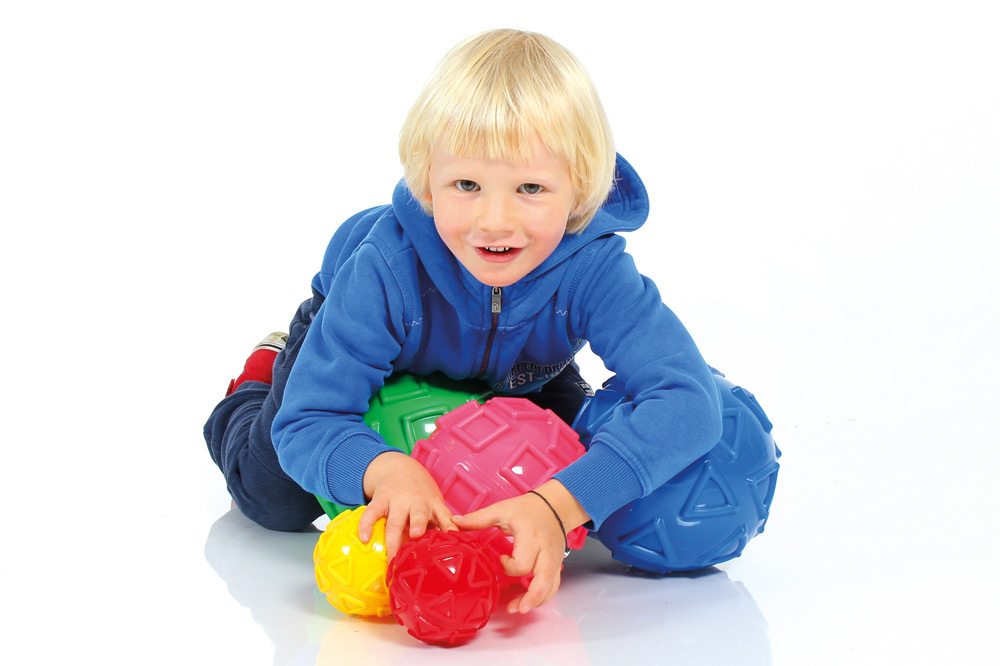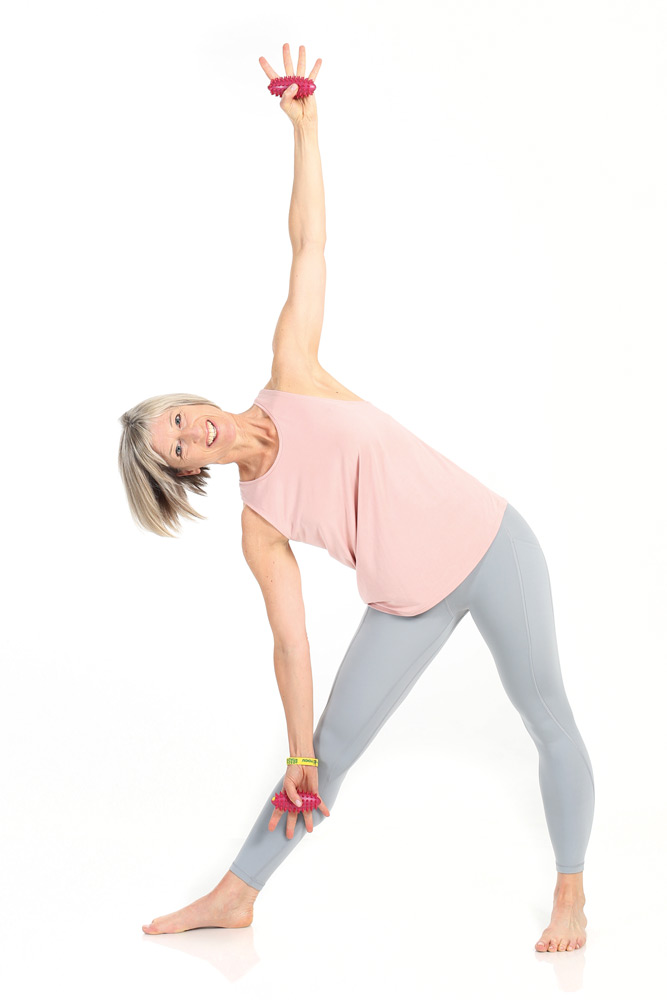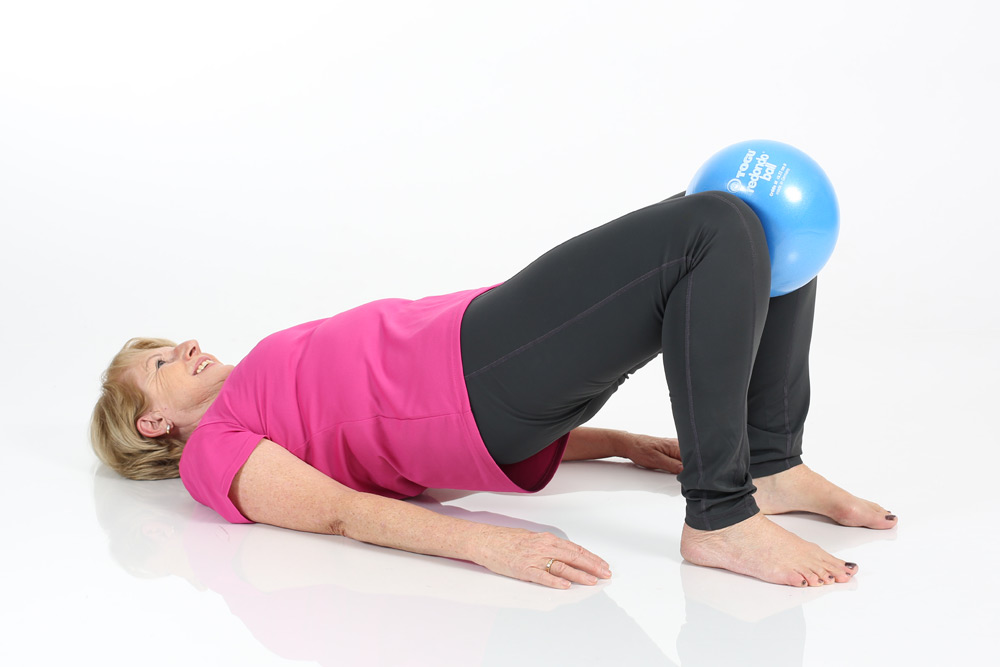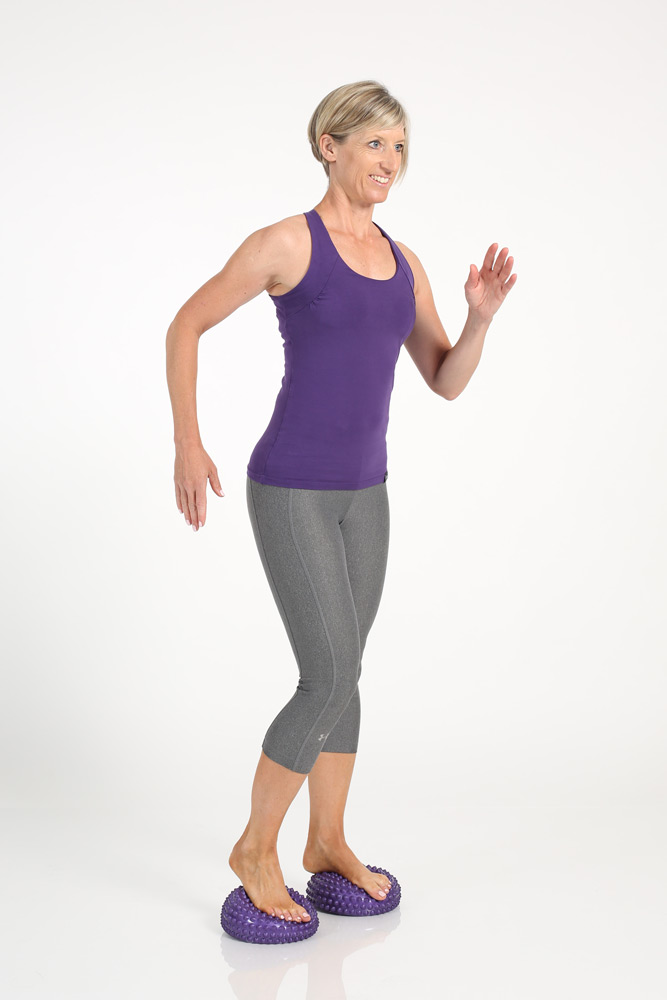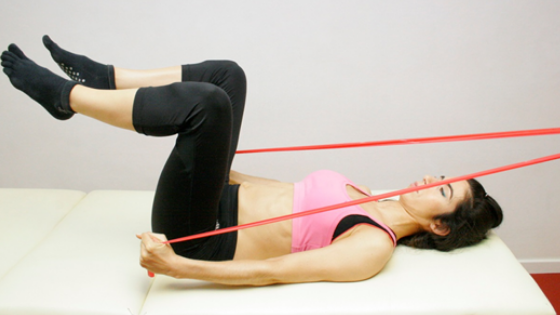
REBODY™ “Breathing as the key to upright position, core stability and performance in sport and everyday life “
Breathing is the most simple and at the same time the most important function of the neuromuscular system
and can be used both reflexively (unconsciously) and purposefully. Every day we breathe between
20,000 and 24,000 times. In addition to its essential function of supplying the body with oxygen and
eliminating carbon dioxide, breathing plays an important role in psychological well-being and physical
performance in everyday life and during sporting activities.
An incorrect breathing technique sooner or later leads, among other things, to compensation of
upright position and perfect movement execution and therefore to complaints/injuries
to the musculoskeletal system.
The most important muscle for breathing is the diaphragm, which in addition to its function as a
breathing muscle, plays a major role in stabilising the torso and spine. The diaphragm is anatomically
positioned within the costal arch and its parachute shape means it spreads out in all directions
(front, side and back). During inhalation, the diaphragm moves downwards into the abdominal area,
allowing the O2-rich air to enter the lungs. At the same time, the pelvic arch moves reflexively downwards.
Meanwhile, a physical pressure called intra-abdominal pressure (IAD) is created throughout
the abdominal belt to stabilise the spine. During the development of IAD, all the muscles around the
spine are activated, such as the transversus abdominis, multifidi, the entire abdominal musculature
and the deep back extensors, and as a result the trunk is completely stabilised. The IAD therefore
serves as a kind of turbo mode for more stability and power generation during an increasing load in
sports and everyday life and can be specifically trained and used. A correct function of the diaphragm
and an upright position of the body are necessary for the development of IAD.
If this were not the case, then very often (consciously or unconsciously) balanced breathing
techniques would be used. Typical thoracic & abdominal breathing (excessive rectus abdominis activity)
results in loss of 3-D mobility of the costal arch and prevents full movement of the diaphragm
(respiratory dysfunction). This also causes muscle tension in the scalenes and SCM muscles, as
these muscles are used heavily during breathing. This also creates the typical head forward position,
as the neck muscles are forced to control the breathing and lift the chest.
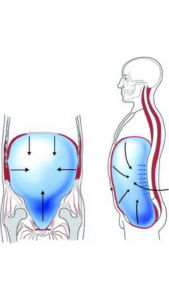
Graphical representation of intra-abdominal pressure (IAD)
Image source: The International Journal of Sports Physical Therapy | Volume 8, Number 1 | February
2013 DYNAMIC NEUROMUSCULAR STABILIZATION & SPORTS REHABILITATION
A correct functional breathing technique is based on the three-dimensional
(forward, backward and lateral) tension of the diaphragm with simultaneous control
of the pelvic floor and abdominal/back area. The IAD therefore takes place through the
successful interaction between the diaphragm, pelvic floor and trunk muscles.
Correct diaphragmatic breathing is achieved through the three-dimensional movement of the
costal arch during breathing. The costal arch should maintain a fluid forward/backward and
lateral movement. This guarantees optimal freedom of movement for the diaphragm during breathing.
An excellent exercise to optimise diaphragmatic breathing and allow the correct use of the core
muscles is to breathe in and out in a balloon.
The patient/athlete is asked to hold the balloon with one hand, inhale through the nose with the
tongue on the roof of the mouth (normal resting position) and then breathe out through the mouth
into the balloon. Inhaling to about 75% of maximum typically takes 3-4 seconds, and exhaling fully
usually takes 5-8 seconds, followed by a 2-3 second pause. It is believed that this slowed breathing
will further relax the neuromuscular/parasympathetic nervous system and generally reduce muscle
tone at rest. The ideal situation is that the patient/athlete can breathe in again without trying to
pinch the balloon off with their teeth, lips or fingertips. This requires maintaining intra-abdominal
pressure to allow inhalation through the nose without the air from the balloon flowing back into
the mouth. This process is repeated 4-5 times or when the balloon is fully filled with air. After the
last inhalation, the patient/athlete takes the balloon out of the mouth and lets the air out of the
balloon while exhaling deeply. This technique can be performed in any position, such as lying
on the back, sitting, standing and many more.
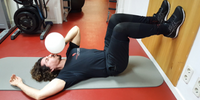

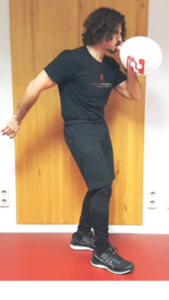
The researchers believe that the resistance of the balloon during exhalation requires an
increase in the activation of the abdominal muscles and therefore the ability of the abdominal
muscles to resist the diaphragm and support the optimal position of the rib cage during exhalation.
Activation/adjustment of the abdominal muscles pulls the lower ribs down and in (caudal and posterior)
and helps to inhibit/relax the paraspinal muscles (trunk extensors), which can help to reduce
the patient/athlete’s lower back lordosis and pain in the paraspinal region Mutual inhibition.
The abdominal muscles do not generate any significant amount of torque or movement in the
spine and in this case act as stabilisers of the ribs during breathing, not as driving forces.
One way to train diaphragmatic breathing is to do the following exercise: lying on your back
with a theraband wrapped around your entire costal arch. The Theraband is crossed in front
of the body below the rib line and the two ends are held at the side of the body in an X-shaped
position in both hands with mild tension. The legs are best raised (better stabilisation for the
lumbar spine and straightening for the trunk and neck muscles). Inhale slowly and consciously
through the nose (for 4-5 sec), hold the air briefly (for 2-3 sec) and then exhale through the
mouth (for 4-5 sec). During the inhalation the Theragymband should be tensed equally in all
directions (front, side and back), the chest bone, the neck muscles and the torso should remain
as stable as possible. On the exhalation, the Theragymband and thus the ribcage return to the
starting position, there is again no clear change in the sternum, cervical and lumbar
spine. (see photo). You can do 3-4 repetitions and look at the behaviour of the ribcage.The
same exercise/test can be done sitting or standing, in which case the risk of compensation
and possible poor positioning would be higher.
After the two test exercises, you can use the following exercises to train the new breathing habits:
In back length with legs bent grasp a large exercise ball between hands and thighs.
The ball touches the abdominal wall gently, perform 4-5 breath cycles into the ball
while feeling the tension in the entire abdominal wall, especially at the sides of the ball.
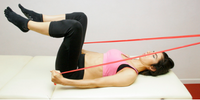
In back length with the legs bent tense the two ends of an attached Theragymband and then
perform 4-5 breathing cycles, the shoulders are not lifted here (no excessive activity
on the upper trapeze).
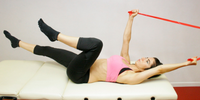
Similar to the previous exercise, keep one leg bent and the other stretched across
the floor. One side of the Theragym Band is tensed (contralateral to the bent leg) and then
3-4 breathing cycles are performed. The lumbar spine remains in a neutral position
the whole time. The exercise is repeated on the other side.
In forearm support position (Prone Plank) with a half ball (e.g. TOGU® Jumper)
underneath the hips. Perform 4-5 breath cycles in the position, keeping the
torso and neck stable throughout.
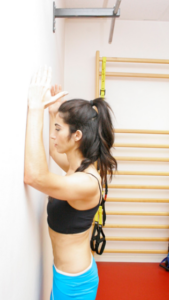
Standing against the wall (light Prone Plank variation) Perform 4-5 breath
cycles in the position Hip, pelvis, torso and neck remain stable throughout.
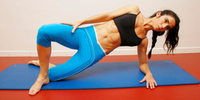
In Side Plank. Lower leg is bent, upper leg is brought forward bent and
front foot is placed. Perform 3-4 breathing cycles Hip, pelvis, torso and
neck remain stable throughout. This exercise is repeated on the other side.
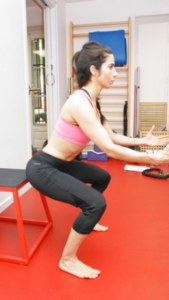
Isometric squat position (with box support). Perform 4-5 breathing cycles
Hip, pelvis, torso and neck remain stable throughout.
After these exercises have become established, you should slowly integrate
the new functional breathing habit into your everyday life and sporting activity.
Here again, it will feel a little strange at the beginning and possibly the
activities will feel a little more stressful than usual. Even with sporting activities,
it may be necessary at the beginning to reduce the stimulus of the activity
(e.g. duration, load, complexity, etc.) somewhat. The more one uses the new
breathing technique, the better the central nervous system is trained to use
it correctly and automatically. Afterwards you feel stronger, more efficient,
more stable and more mobile. For people suffering from chronic back pain,
the relief will be enormous, as the spine is stabilised from the inside
throughout and reflexively protected during any activity or strain.
The topic of functional breathing is part of the REBODY® FTCOACH
training and is explained and trained in detail. Information and dates
can be found at http://www.rebody.eu/training/?lang=de or simply contact: ftcoach@rebody.eu
Author: Panos Pantas
PhD in biochemistry and for 20 years personal trainer and international lecturer
for functional training in Europe and Asia. For over 8 years he has been the owner of
REBODY™ Center in Barcelona (www.rebody.eu). Panos is the developer of the
REBODY®FTCOACH
Training and REBODY®PNF Training concepts and is with his international team
and is responsible for their content and distribution worldwide.



